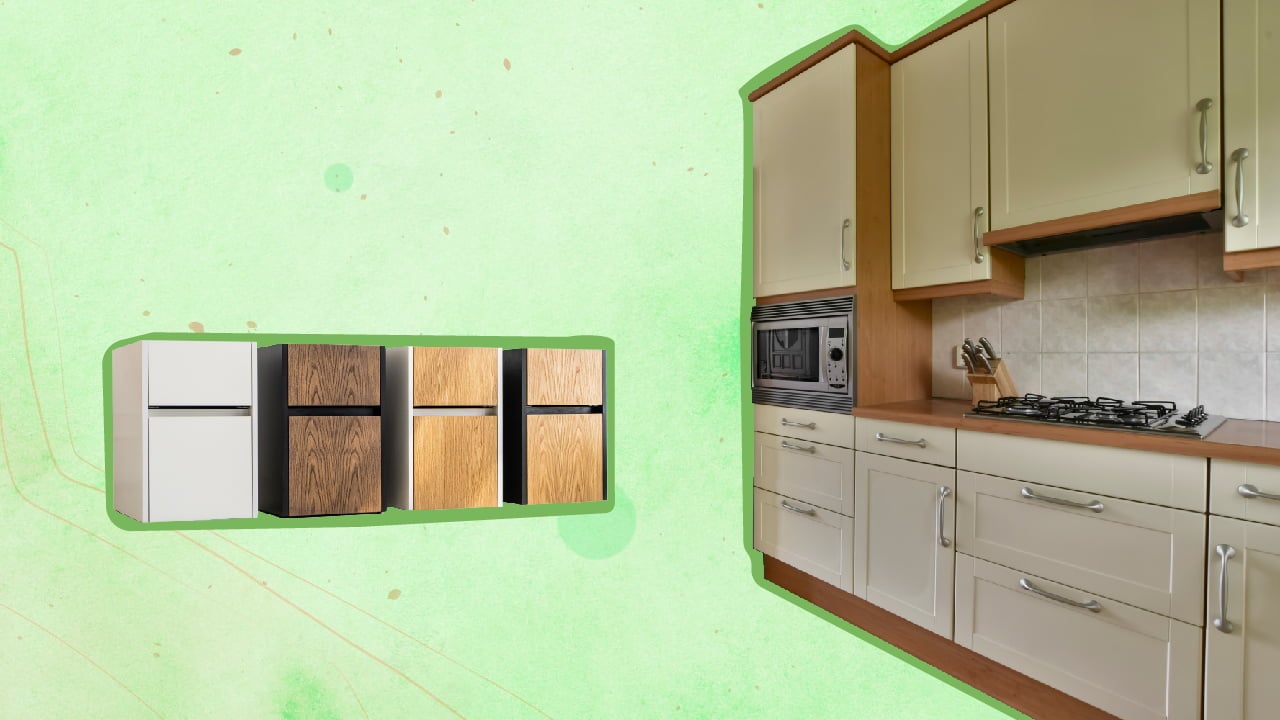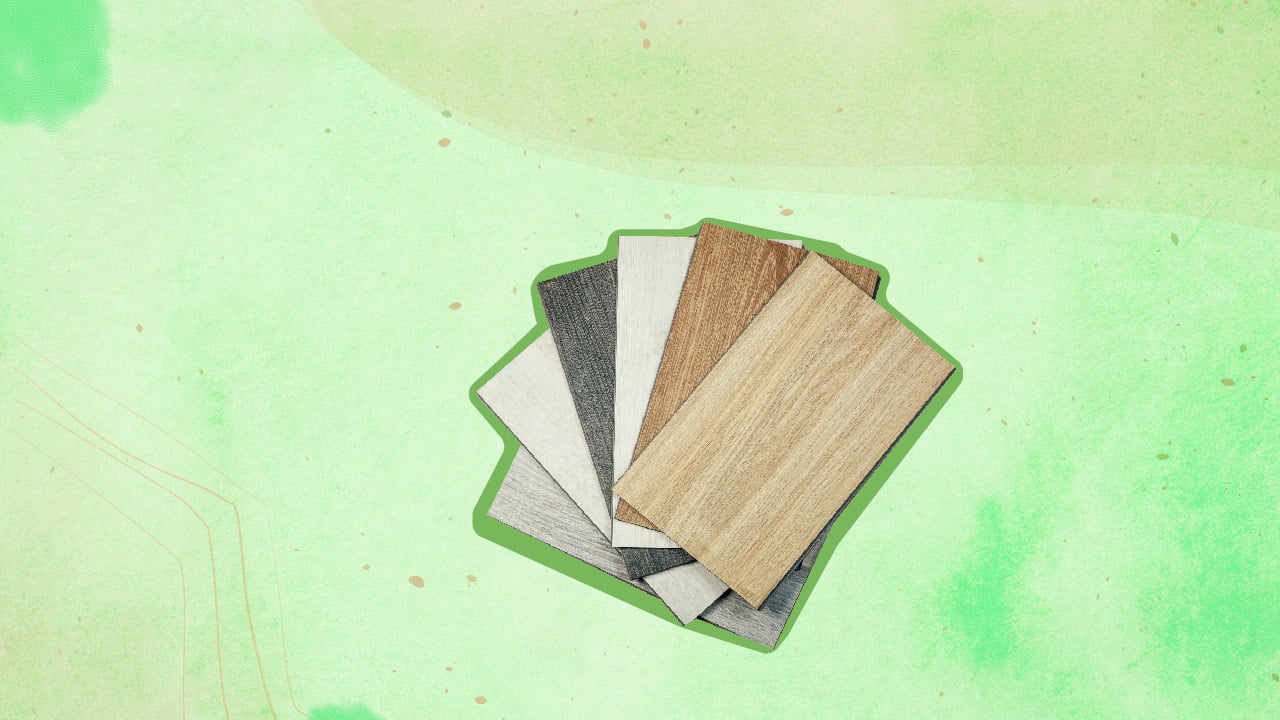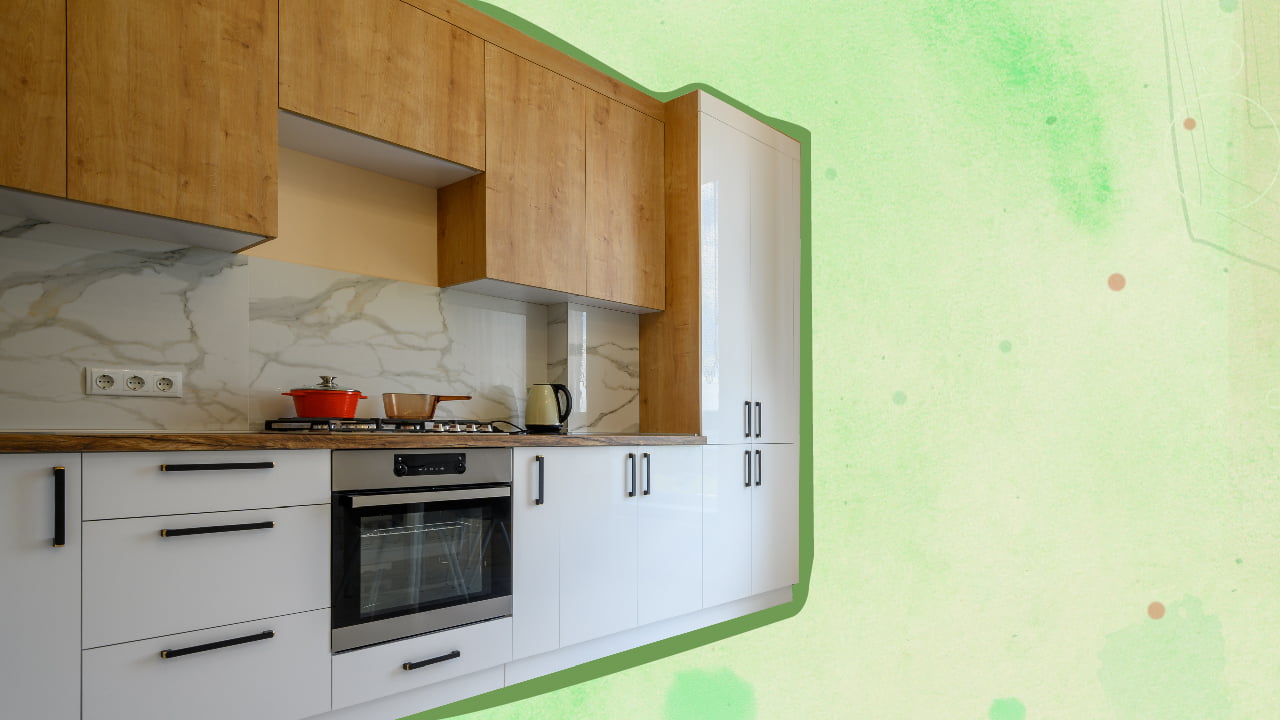Peeling veneer on cabinets is fairly common, but fixing them is pretty simple. The most common way to fix a peeling veneer is by gluing it down or using adhesive. However, for severely damaged cabinets, the entire veneer has to be replaced.

Particle board cabinets are cost-effective alternatives to hardwood cabinets. They offer multiple colors and designs that greatly complement any room. But cabinets that do not utilize high-quality veneers and the best screws for particle board often start peeling when exposed to extreme conditions like high humidity and rough use.
To help you fix your particle board cabinet to achieve optimal utility, I have curated a step-by-step guide on repairing peeling veneers.
What Is Veneer?

In woodworking and home furniture, a veneer is a thin layer of wood or bark that is glued to the surface of particleboard cabinets. Veneers can be made from either real wood or wood filler, typically used to imitate the smoother finish of real wood furnishings. Carpenters glue them to the cabinet doors and panels.
Providing a natural wooden aesthetic to your cabinet space, veneers are a suitable alternative to real wood usage. Reconstituted wood veneers can especially protect endangered wood species while offering superior texture and color.
However, installing veneers requires more skill than simply laminating cabinets.
How To Repair Peeling Veneer On Particle Board Cabinets
Peeling veneers do not necessarily require professional carpenters to fix them. I have repaired many cabinets with damaged veneers, and they all look as good as new. So, don’t throw out your perfectly functional kitchen cabinets yet! Follow these steps instead.
Things You Will Need To Fix Damaged Veneer
- Putty knife
- Paint primer
- Sandpaper
- Measuring tape
- Veneer adhesive or wood glue
- Ruler or straight edges
- Paint
- Disposable brush
- Contact cement
- Wood veneer or laminate veneer pieces
- Woodworker’s clamps
- Soft cloth or rag
Depending on the extent of veneer damage, I suggest using one of these four methods:
1. Glue Down Peeling Veneer
Step 1
Using a set of pliers, peel back the laminate or veneer layer. File down the wood underneath with sandpaper to create a smooth surface. You can also use a putty knife to scrape away any old cement.
Tip
Do not peel or remove any excess length of the veneer. Stop pulling when you feel a little resistance to the existing adhesive.
Step 2
When the area is sanded and prepared, apply contact cement on the particle board and under the old veneer. You can use a disposable paintbrush for smoother application.
However, I suggest not using a foam brush with contact cement since it leads to uneven and patchy cementing. Moreover, ensure that the laminate piece or veneer does not touch the board until it dries.
Tip
Remember to apply contact cement on the edges of the particle board to prevent more peeling.
Step 3
Once the contact cement has dried, gently press the two surfaces together. Do this carefully since misalignment or bubbles are common during this step. I suggest holding them in place for an hour to ensure better attachment.
Place the attached work between two scrap board pieces and use a woodworker’s clamp to hold it down.
Step 4
Remove the excess contact cement with your fingers or a knife. If that doesn’t work, you can use a pencil eraser to make it pill.
Tip
Use a j-roller to confirm if the entire length of the particle board is covered with cement.
2. Use Spray Adhesive
Even though clamping the particle board down after cementing is essential, it is often not possible. Using clamps can be challenging for certain parts, like a cabinet door. In these cases, a spray adhesive is ideal for applying wood glue underneath the peeling section and then putting them together. Employ a j-roller for neat application.
3. Replace The Veneer Or Peeling Laminate
When the particle board is not in good shape, it may not be lucrative to repair the peeling veneer. In this situation, replacing the veneer or laminate is the best choice.
Step 1
Melt the existing glue to loosen the peeling pieces using a heat gun. Then, gently peel the veneer from the particle board. For difficult pieces, use a sharp utility knife to remove them.
Step 2
Clean the area with a damp cloth to remove excess dirt or debris. Then, measure how much replacement veneer you need and cut them into pieces. I recommend using a circular saw to chop the new veneer for better precision–they can be easily available in hardware stores. For more insights into cutting tools, read my article titled “How To Cut Particle Board.”
Tip
Don’t worry if you cut slightly larger pieces since you will sand them anyway.
Step 3
Apply contact cement on the new veneer and the particle board. Once the cement is dry, glue them together by using a clamp to hold down the cabinet door.
Step 4
Trim off any excess new veneer, and smooth out the edges of the cabinet door with sandpaper. I always clean all the veneer surfaces with a damp cloth before applying a coat of paint.
4. Repairing Veneers With Water Damage
If your cabinet veneer has water damage, you must add a few steps before using the previous methods.
Step 1
First, ensure that the wet particle boards are dry. Use an air dryer until there is no wetness at all. When they are dry, use a grit sandpaper for sanding the surface. Sanding these areas can help remove excess wet spots and give you a smoother surface to work on.
Step 2
Wipe the dust off the surface and proceed to dry it again. Then, apply a thin layer of waterproofing agent before gluing or replacing the veneer.
Should You Replace Or Repair Peeling Veneer?
When the veneer on the cabinets peels due to excess heat or moisture, a simple repair is appropriate, especially in cases of localized damage. Follow the first and second methods to repair small, limited damage.
For larger areas of veneer damage, too, repairing can be cost-effective. However, it might not appear as smooth as professional repairs. Follow the third method for an extensively peeling veneer.
If the peeling is not localized and is spread across multiple cabinets in a particular area, calling a professional is essential. Upon inspection, they will either tell you to replace your cabinets or let them initiate a veneer replacement project. You can choose whichever option is affordable to you.
Tips To Maintain Veneer And Prevent Peeling
Taking proper care of your furniture coatings ensures greater longevity. Here are a few steps you can take to prevent peeling and damage to your particle board cabinets.
1. Regular Cleaning
- Always use a sponge or soft cloth and a mild soap-water solution to clean the surface
- Avoid applying too much pressure and excessive scrubbing
- For cleaning stains, use diluted household cleaners without adhesives
- Do not scrub surfaces to remove grease, and use a lukewarm solution instead
2. Disinfecting Surfaces
- Remove dirt and grease from the cabinet surface
- Before using a disinfecting solution to the entire surface, apply it to a small area for a patch test
- If it does not do any harm, you can proceed with the disinfection process
Lastly, avoid keeping veneer cabinets in excessively hot and humid conditions.

Repair Peeling Veneer On Particle Board Cabinets Final Thoughts
While fixing a patchy veneer is pretty simple, severe cases like water infiltration or veneer rotting may require professional help. This kind of damage requires more factory-level measuring, cutting, and pasting. To achieve a better finish and durability, I suggest hiring a professional carpenter or company in such cases.
If you’re repairing it yourself, I recommend following some safety measures. These include working in a well-ventilated area, especially while using contact cement. Also, if the damaged veneer is on a cabinet door, remove and fix it in an open space such as a garage.
That’s all about repairing peeling veneer on particleboard cabinets. I hope my step-by-step guide helps you fix your kitchen cabinets without any hassle. If you like such informational guides or manuals, check out my article “How Much Weight Can Particle Board Hold?”
Until next time, stay safe!
